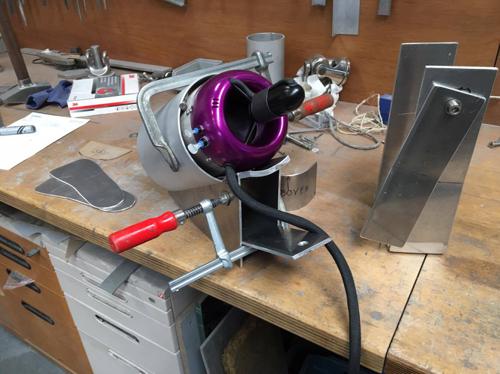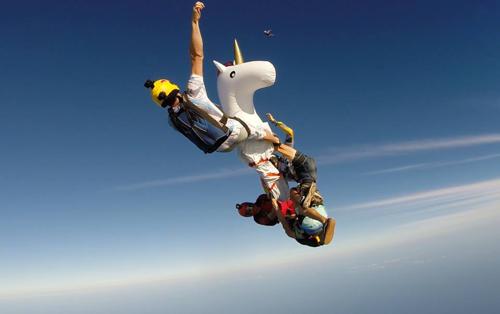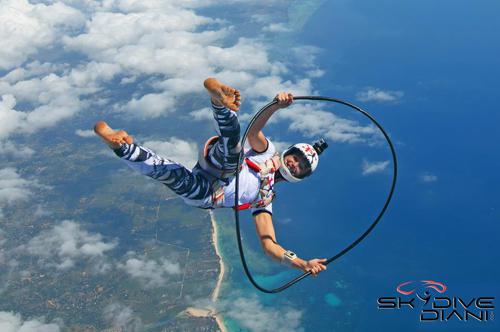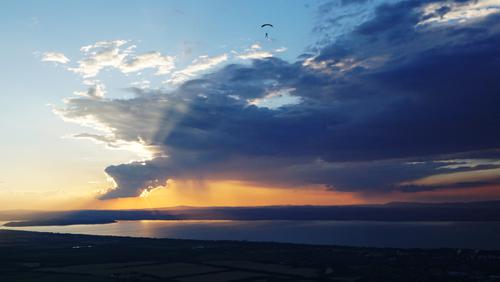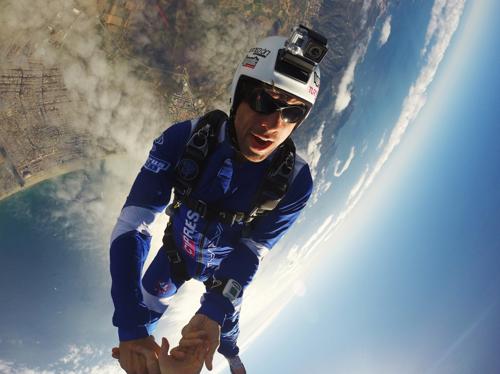How To Be A Better Wingsuit Student
All Images by Scotty Burns
Scotty Burns Breaks Down Your Pre-FJC Checklist
Scotty Burns is a skydiver with fixed-wing pilot blood in his veins. He started skydiving on his 18th birthday, because his first commercial aviation gig--towing banners--included an obligatory parachute. He decided that he wanted to learn how it worked, just in case he had to use it. The rest, of course, is history.
While today Scotty owns and operates the Flyteskool wingsuit academy in DeLand, Florida, his airborne specialties go far beyond inflatable nylon. For almost two decades, he’s held Commercial Multi-Engine Instrument Airplane (and helicopter) ratings, with a couple thousand hours of PIC (pilot-in-command) time. It’s his Wingsuit Instructor Examiner role that most folks in skydiving recognize Scott in most readily, however, as he’s spent the last ten years training over a thousand baby-bird wingsuit students at dropzones all over the world (and as the Wingsuit I/E for Skydive University).
Scotty’s pilot-first-skydiver-also training techniques have helped to make wingsuit flying safer for everyone over the years--and, in the process, he has seen the good, the bad and the ugly when it comes to wingsuit wannabes. If you’re interested in the good and interested in avoiding the bad and the ugly, listen up. Scotty has a few things to say to you before you show up for that wingsuit FJC.
Here it is--in his own words...
Slow Your Roll
A lot of the issues that we’re starting to see over and over these days point right back to the same root cause: rushing. People are really wanting to start flying wingsuits as quickly as possible, almost in spite of the rest of the sport. To save money, they’ll get in and do 150 hop-and-pops. They just jump their ass off for the numbers and don’t focus on building actual skills in freefall or under canopy. Their canopy skills are especially crappy, because hardly any of these guys have done any canopy coaching. They just want to get to jump number 200 and they assume they’ll figure it out.
Round out your skills.
One of the first things that I would recommend people do that want to get into wingsuiting is to laser focus on building a well-rounded set of skills, and to do so early. On your way to that first hundred jumps, learn all the other disciplines that you can. Go out and do a bunch of RW jumps. Learn how to turn points and do different exits, and get comfortable doing that. Learn how to do some head-down. Get into some angle flying and tracking jumps, because it is really going to help you learn how to control the air as you get further into your skydiving career. Flying a wingsuit is not an unrelated accessory to this progression. It requires all the work that comes before.
That said: As you learn to fly a wingsuit, you are becoming a lot more of a pilot or an airman than you are a skydiver. There are a lot of differences between jumping with a wingsuit and jumping without a wingsuit. There are a lot of skills and experience that you need to have that you really don’t learn in any other form of skydiving. That is not an oversight on the part of your teachers; these skills are simply not necessary in other disciplines.
Learn to fly your canopy, then your wingsuit.
Your wingsuit is not how you land. Your canopy is. And in our discipline, it is much more common to have to land out, in a place you don’t want to--like someone’s backyard, or a parking lot--under a reserve, not so uncommonly. Statistically speaking, you are much more likely to get injured close to the ground in that wingsuit. Your ability to put yourself down safely in a place you wouldn’t normally want to go because you didn’t have any other choice is an extremely important skill. Get canopy coaching, and plan on the worst possible case scenario.
Ease off the YouTube.
Don’t spend your time watching every wingsuit video on Vimeo. It is cool and all, but it becomes a liability at a point. For instance: I had a student come out just the other day who has been working in the industry for a couple of years and has been waiting to start flying wingsuits. At my ground school, he was talking over me half the time and telling me what he had learned through all of these BASE videos that he had seen. He was acting unteachable. He is a really nice guy, but if he wasn’t in the industry, I would have had to tell him to go home.
Take it easy. Then take it easier.
Because one of the most important things about flying a wingsuit is your ability to relax, there is a huge difference between what most people see in videos before they learn how to fly and what they should actually be doing when they first put on that suit. There is a huge difference between what people do that are BASE jumping with a wingsuit--the decisions they’re making, and the gear they are flying--versus what somebody at 200 jumps is going to do. And it’s also important to remember that a lot of the guys in those videos are no longer with us. Some of the most talented human beings you would ever know or ever dream up. So what does that tell you? That means that it doesn’t take much to screw up, so you’d better take the long, thorough road.
On that first jump, remember: You’re not trying to go out and break any records. You’re trying to make sure that you can get out safely and fly a pattern and pull with stability. You should aim to fly at 60 or 70%. You wouldn’t jump into a brand new race car and mash the pedal to the floor to get it out of the dealership. he amount of drag that you produce in that wingsuit versus the drag you produce on a normal jumpsuit is 6 or 8 times as much--easily--so it only takes about an eighth of the amount of input to get the same kind of response. The more you can relax, the better off you will be.
Planning for Plan B is not optional.
Planning for that worst possible case scenario has always got to be in the back of your head because it is going to happen. It might not happen today or tomorrow, but it is going to happen and it is probably going to happen at the worst possible time. Making sure that you have got that out is very important. Modern wingsuits are tiny little F16s without engines. It is really easy to find yourself miles away from where you were supposed to be. I have had to land in more people’s backyards than I care to admit to. Most of the time it wasn’t that I personally made a mistake; it was because shit just happens in this sport, and you have to be ready. You can make great decisions and still shit can go down. Then you end up having to rely on emergency skills that you had better hope are there.
Keep it simple.
Most people that are getting into it just want it so bad and they try too hard. If you can just relax and smile, listen to your coach and do as you were taught (and not what you learned from videos), you can keep yourself doing this for the next 15 or 20 years--versus being broken, giving up on it, or worse.
It is incredible to see how far the wingsuiting discipline has come. It’s really sad that so many of our friends aren’t still around to see the changes. That’s why it is even more important for people to seek out the best information--and the best instruction--they can.
By nettenette, in Safety,


